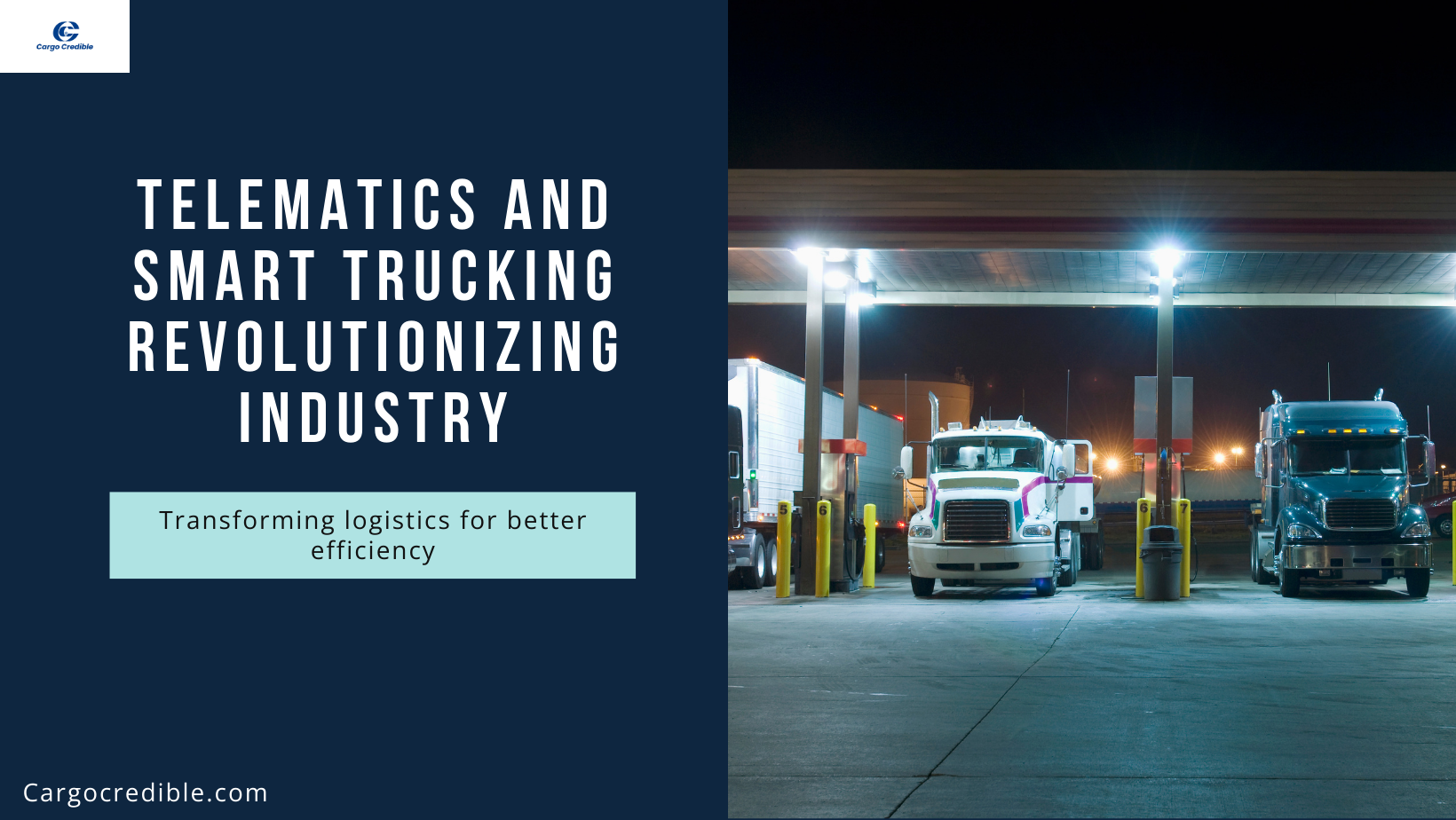Telematics and Smart Trucking: Revolutionizing the Industry

In recent years, the trucking industry has witnessed a technological revolution that is changing the way goods are delivered and managed. This revolution is driven by telecommunications and informatics, a field known as telematics. Telematics is the fusion of technology and communication systems to gather and analyze data from vehicles, trailers, and cargo. Thanks to telematics, trucking is safer, more efficient, and smarter than ever before.
The History of Telematics in Trucking
Telematics technology began entering the trucking industry with GPS tracking systems in the late 1990s. Initially, it was used to track vehicles and improve route planning. Over time, telematics expanded to include vehicle diagnostics, driver monitoring, fleet management, and even cargo tracking.
The first generation of telematics mainly focused on helping fleet managers monitor the location and speed of their trucks. It allowed them to track vehicles in real-time, helping reduce fuel costs and improve delivery efficiency. As technology improved, telematics evolved into a much more powerful tool that offered a complete solution for managing fleets and cargo, helping trucking companies cut costs and improve safety.
How Telematics Makes Trucking Better
Today, telematics is revolutionizing every part of the trucking industry. Let’s break down some of the key benefits of telematics for trucking companies, drivers, and fleet managers:
Reduced Operating Costs:
Telematics reduces idling time by tracking truck movements and rerouting drivers away from heavy traffic or construction zones. By using smart route planning, companies save fuel costs and increase fleet utilization. In fact, smart route management has been shown to reduce fuel consumption by up to 10%.
Improved Safety:
Telematics systems include dash cams, collision detection, and driver behavior monitoring. These devices help identify risky driving behaviors such as speeding, harsh braking, and swerving. Fleet managers can provide training or rewards based on the data collected, ultimately making roads safer for both drivers and other travelers. AI-powered dash cams can also detect distracted driving and alert the driver, reducing the risk of accidents.
Better Vehicle Maintenance:
With telematics, sensors in the vehicles can detect mechanical problems and send real-time alerts to drivers and fleet managers. This helps prevent breakdowns by scheduling maintenance before issues become serious. Telematics also helps monitor tire pressure, engine health, and fuel efficiency, which leads to better vehicle performance and longer truck lifespans.
Enhanced Driver Retention:
Long hours and stressful work schedules often lead to high turnover rates in the trucking industry. However, telematics offers drivers a chance to stay connected with their teams. With mobile apps and smart tablets, drivers can participate in virtual meetings, receive real-time support from fleet managers, and engage with their colleagues, improving job satisfaction and reducing stress.
Cargo Tracking and Security:
Telematics helps monitor the location and condition of cargo. Smart sensors in trailers can detect temperature, humidity, and shock, ensuring that sensitive goods like food or pharmaceuticals are transported under optimal conditions. For example, if a shipment of spinach or vaccines experiences a temperature change during transit, the system sends a real-time alert to the driver, allowing them to intervene before the cargo is spoiled.
Optimized Fleet Management:
Fleet managers can use telematics to track truck usage, ensure timely deliveries, and reduce the idle time of vehicles. By associating cabs with trailers, they can quickly swap trailers if a truck breaks down. Telematics also enables better decision-making about which trailer to use, so vehicles aren’t sitting unused, further enhancing efficiency.
Telematics Devices Changing the Game
Several devices and applications are making telematics even more effective. Some examples include:
- Link 740 Vehicle Tracker: Tracks vehicles and driver behavior, offering enhanced vehicle data and CAN bus connectivity.
- Fleet Dash Cam: Uses AI technology to analyze driver behavior and capture dashcam footage for safety and insurance purposes.
- Webfleet eLogs: Helps drivers comply with Hours of Service (HOS) regulations, improving productivity and reducing administrative workload.
Additionally, smart trailers now come equipped with temperature sensors, tire pressure monitors, and cargo tracking systems. These innovations make it easier for managers to track shipments in real-time and ensure they are delivered on time and in good condition.
The Impact of Telematics on the Trucking Industry
The growth of telematics in trucking is staggering. Over the past decade, the global telematics market has grown significantly. In 2015, the global market for fleet management was valued at $8.4 billion. By 2025, it’s projected to reach over $25 billion. This growth reflects the increasing adoption of telematics technology by businesses seeking to reduce costs, improve safety, and increase efficiency.
Statistics show that companies using telematics can experience up to a 15% improvement in fuel efficiency and a 10-15% reduction in maintenance costs. Additionally, driver behavior improvements have been linked to a 30% decrease in accidents.
The Future of Telematics and Smart Trucking
Telematics is not just improving today’s trucking industry—it’s shaping its future. The rise of driverless trucks, autonomous vehicles, and drones are all linked to the broader telematics network, further expanding the Internet of Things (IoT). Trucks, trailers, and cargo will be more connected than ever, enabling end-to-end visibility across the entire supply chain.
Telematics will continue to evolve, providing businesses with smarter, more efficient tools for managing their fleets, improving safety, and ensuring timely deliveries. The next decade promises even greater advancements in telematics, making the trucking industry safer, greener, and more connected than ever before.
In conclusion, telematics technology has not only made trucking more efficient and cost-effective but also has improved safety and driver satisfaction. The growth of this technology over the past decade shows just how critical it has become for trucking businesses worldwide. As telematics continues to evolve, the industry will keep improving, delivering faster, safer, and smarter solutions for the transportation of goods.
Comments (0)
- No comments yet.